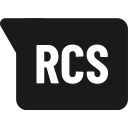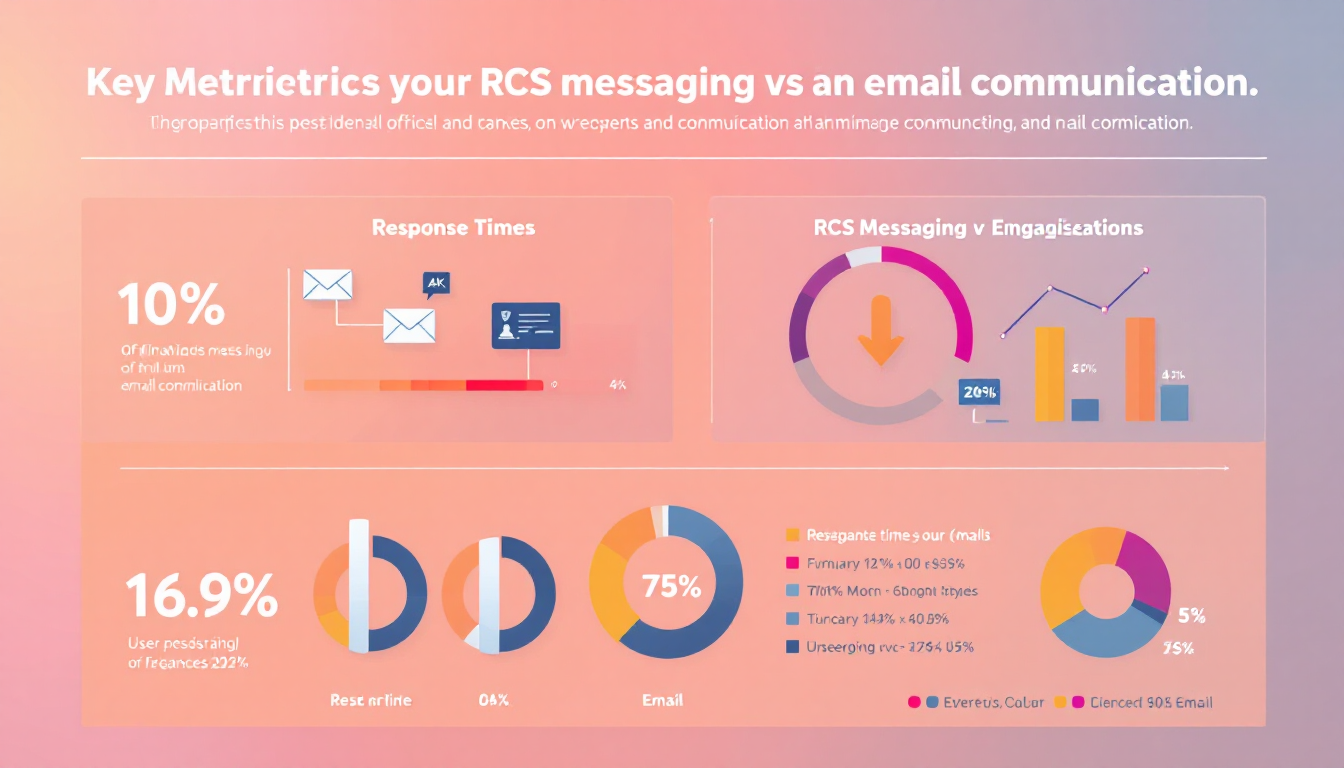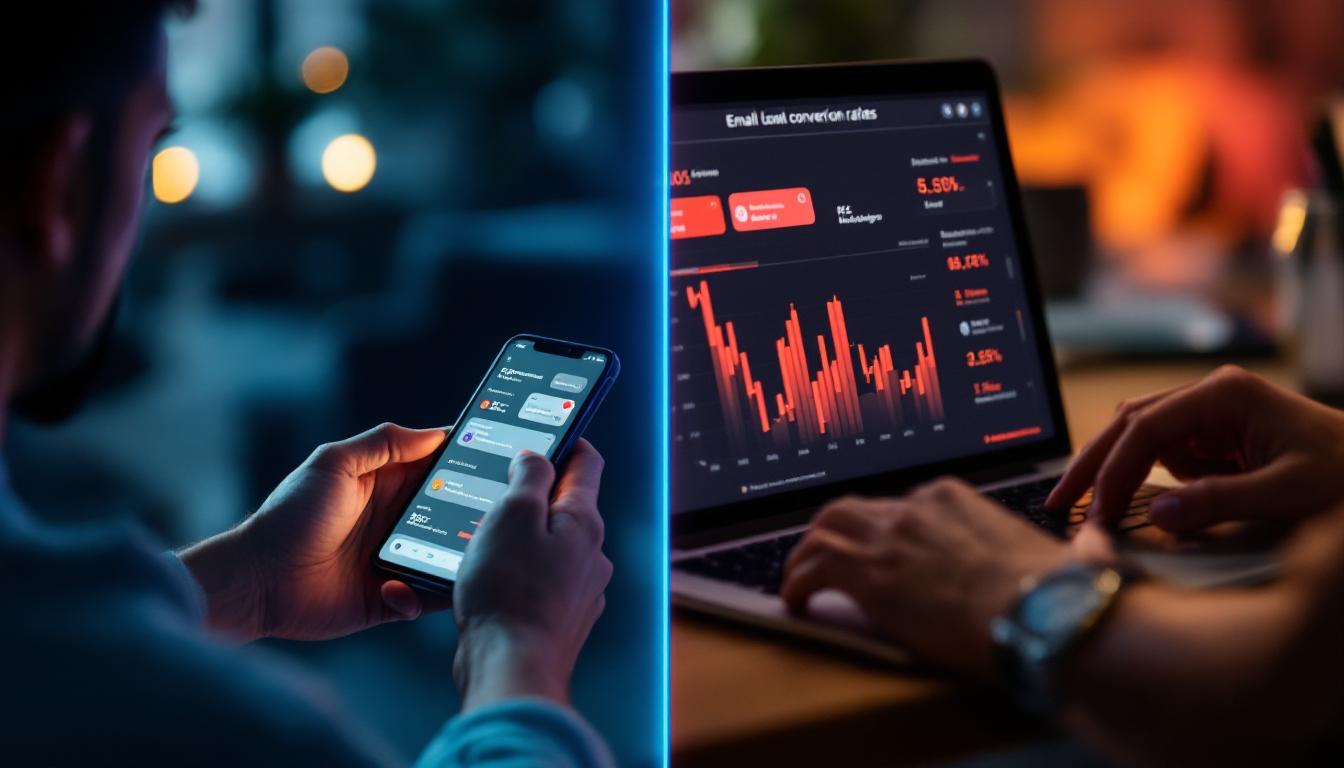In today’s fast-paced digital landscape, marketers continually seek methods to enhance engagement and drive conversions. Two channels that have emerged as front-runners are Rich Communication Services (RCS) and traditional email marketing. This article delves into the intricacies of both platforms, evaluating their effectiveness in delivering higher conversions. As we explore these communication tools, we’ll highlight their unique features, strengths, and weaknesses, ultimately offering insights to help businesses strategize effectively.
Understanding RCS and Email Marketing
Before diving into the comparison, it’s important to understand what RCS and email marketing entail and how they function as marketing channels. Each has its place in the marketing ecosystem, with distinctive advantages that cater to different consumer behaviors.
Defining RCS: An Overview
Rich Communication Services (RCS) is an advanced messaging protocol that enhances standard SMS capabilities. It offers features like rich media, interactive buttons, and tailored content experiences within the messaging interface. This means brands can deliver immersive multimedia content directly to a user’s messaging app, allowing for immediate interaction.
RCS not only supports images and videos but also provides analytics that enables businesses to track user engagement more effectively. This level of interactivity can significantly improve user experience and drive higher conversion rates compared to traditional SMS. Furthermore, RCS allows for two-way communication, enabling brands to engage in real-time conversations with customers, answer queries, and provide instant support, which can foster stronger customer relationships.
As RCS continues to gain traction, its integration with customer relationship management (
The Mechanisms of RCS and Email Conversions
Understanding how each channel drives conversions is crucial for effective marketing strategies. Both RCS and email have unique mechanisms that can enhance or hinder conversion rates, depending on their implementation.
How RCS Drives Conversions
RCS drives conversions by leveraging its interactive nature. Users can engage with dynamic content, such as carousels showcasing products and services. The inclusion of call-to-action buttons allows customers to complete transactions seamlessly, reducing friction in the purchasing process.
Furthermore, RCS messages are visually appealing and can be tailored to reflect the brand’s identity, which enhances the overall customer journey. This immediate engagement is vital in converting leads into paying customers. The real-time capabilities of RCS also allow brands to send time-sensitive offers or updates, creating a sense of urgency that can further incentivize users to act quickly. As a result, RCS not only facilitates direct transactions but also fosters a more interactive relationship between the brand and the consumer.
The Role of Email in Conversion Rates
On the other hand, email marketing plays a crucial role in nurturing leads over a longer period. Regular newsletters and updates keep a brand top-of-mind for potential customers. It’s a less immediate yet more sustained approach to engagement.
Email allows for comprehensive segmentation, enabling brands to target specific audiences with tailored messages. Furthermore, the ability to analyze user behavior through opens and clicks contributes to refining email strategies for improved conversions over time. Additionally, the use of personalized content, such as product recommendations based on past purchases, can significantly enhance the relevance of emails, making recipients more likely to engage with the content. This personalization not only increases the likelihood of conversions but also builds a stronger connection between the customer and the brand, fostering loyalty and repeat business.
Comparing RCS and Email: Key Metrics
To make an informed decision about which channel to utilize, marketers should consider several key metrics, including delivery rates, open rates, and click-through rates (CTR). Each metric provides insights into how effectively a channel is performing.
Delivery Rates: RCS vs. Email
Delivery rates refer to the percentage of messages successfully delivered to users. RCS enjoys a higher delivery rate as it leverages existing mobile infrastructure and typically has fewer issues with spam filters, especially compared to email.
In contrast, while emails can be effectively filtered and organized, they often face challenges such as being marked as spam or ending up in promotional folders, significantly impacting delivery efficacy. Accurate segmentation and targeted campaigns can help mitigate these challenges in email marketing. Additionally, the rise of AI-driven tools has enabled marketers to personalize email content more effectively, increasing the likelihood of reaching the intended audience. However, the inherent limitations of email still pose a significant hurdle for marketers aiming for maximum reach.
Open Rates: A Comparative Analysis
Open rates indicate how many recipients engage with a message. RCS messages often boast higher open rates due to their novelty and because they appear directly in the user’s messaging app, a space typically reserved for personal communication.
Email open rates, however, vary widely but are generally lower due to the saturation of marketing emails in inboxes. Effective subject lines and timing can help boost email open rates, but the channel inherently faces barriers that RCS does not. Moreover, the integration of rich media elements in RCS, such as images, carousels, and buttons, captivates users’ attention more effectively than traditional email formats, further enhancing engagement. As users become more accustomed to RCS, the potential for even higher open rates grows, making it a compelling option for marketers.
Click-Through Rates: Which Channel Performs Better?
Click-through rates are a critical measure of engagement and the likelihood of conversion. RCS typically outperforms email in this metric due to the interactive features that allow users to take action without leaving the messaging interface.
Conversely, email links prompt users to navigate to external sites, which introduces additional steps in the conversion process. However, well-crafted email campaigns with strong call-to-action elements can still yield respectable click-through rates. Furthermore, the ability to track user interactions in real-time with RCS provides marketers with immediate feedback on campaign performance, allowing for rapid adjustments and optimization. This agility is less prevalent in email marketing, where insights are often delayed, making it challenging to pivot strategies quickly in response to user behavior.
The Impact of Mobile Usage on RCS and Email Conversions
As mobile device usage continues to surge, the impact on both RCS and email marketing strategies becomes more pronounced. Understanding how consumers interact with these channels on mobile is crucial for optimizing conversion opportunities.
RCS and the Mobile-First Approach
RCS aligns seamlessly with a mobile-first strategy, given that it operates within messaging applications that users already utilize daily. This integration allows for a more organic feel to communications, making it easier for brands to deliver content that resonates with users.
Moreover, features like location-based messaging can help businesses tailor their offerings based on user data, significantly enhancing relevance and, consequently, conversion potential. For instance, a retail store can send personalized offers to customers who are nearby, increasing the likelihood of immediate engagement and in-store visits. This level of personalization not only boosts conversion rates but also fosters a deeper connection between the brand and the consumer, as users feel valued and understood.
Email Conversions in the Age of Mobile Browsing
Email marketing must also adapt to the mobile-centric landscape. With a significant portion of emails opened on mobile devices, designing mobile-friendly emails has become paramount. Responsive designs that ensure readability and easy navigation can significantly affect conversion rates.
Additionally, focusing on concise messaging that captures attention quickly can improve engagement, as mobile users often skim through content while on the go. The use of compelling visuals and clear calls-to-action can further enhance the effectiveness of email campaigns. A/B testing different layouts and content types can provide valuable insights into what resonates best with mobile users, allowing marketers to refine their strategies continuously. Furthermore, integrating social sharing buttons within emails can encourage recipients to spread the word about promotions and offers, amplifying reach and potential conversions in an increasingly interconnected digital landscape.
The Future of RCS and Email Marketing
Looking forward, both RCS and email marketing are expected to continue evolving. Each channel offers unique advantages, but emerging trends will shape how businesses utilize them in their marketing strategies.
Predicted Trends for RCS
As RCS technology develops, we can expect a surge in personalization capabilities, enabling brands to create more targeted and relevant customer interactions. Enhanced analytics will provide deeper insights into user behavior, allowing for more refined targeting and messaging.
Moreover, as more businesses adopt RCS, competition will drive innovation, leading to better features and potentially reducing costs for businesses looking to implement this channel effectively. The integration of rich media, such as images, carousels, and buttons, will also allow brands to create visually appealing messages that can capture consumer attention more effectively than traditional SMS. This shift towards a more interactive format can enhance user experience and foster stronger brand loyalty.
The Evolving Landscape of Email Marketing
Email marketing will also undergo transformations, especially with the integration of artificial intelligence and machine learning. These technologies can help analyze massive data sets to predict user behavior, allowing for ultra-personalized content delivery.
Furthermore, interactive elements, such as embedded videos and polls in emails, are likely to become more common, enhancing engagement and conversion rates. As consumers become accustomed to these dynamic features, brands will need to adapt their strategies to meet these expectations, ensuring that their emails not only inform but also entertain and engage. Additionally, the rise of privacy regulations will push marketers to prioritize transparency and consent, leading to more ethical practices in data collection and usage, which could ultimately foster greater trust between brands and consumers.
Making the Right Choice for Your Business
Ultimately, the decision between RCS and email marketing should be based on several factors unique to your business needs and target audience. Evaluating these channels carefully will help drive conversions more effectively.
Factors to Consider When Choosing Between RCS and Email
Some key considerations include your target audience’s preferences, the nature of your products or services, and your overall marketing goals. If instant interaction and rich content are your priorities, RCS may be the better option.
On the other hand, if building long-term relationships and nurturing leads is your focus, email marketing may be more suitable. Each channel can play a significant role in your overall marketing strategy, and leveraging both might just provide the best results.
Additionally, understanding the demographics of your audience can greatly influence your decision. For instance, younger consumers may gravitate toward the immediacy and interactivity of RCS, while older demographics might prefer the familiarity and structure of email. This insight can help tailor your messaging and approach, ensuring that you resonate with your intended recipients.
Tailoring Your Strategy: RCS, Email, or Both?
The most strategic approach could be to integrate both RCS and email marketing. By creating cohesive campaigns that utilize the strengths of each channel, businesses can engage users at multiple touchpoints.
For instance, using email to sign up users for RCS updates combines both channels’ advantages, ensuring high engagement throughout the customer journey.
Moreover, consider how each channel can be used at different stages of the customer lifecycle. RCS can be particularly effective for time-sensitive promotions or immediate customer support, while email can serve as a platform for detailed product information, newsletters, and personalized offers that nurture leads over time. This layered approach not only enhances user experience but also increases the likelihood of conversions by providing the right message at the right moment.
Ready to Elevate Your Conversion Rates with RCS?
Discover the power of RCS Business Messaging with nativeMsg, the RCS Business Messaging Creator. Transform your text messaging into engaging, interactive experiences that captivate your audience and drive conversions. With nativeMsg’s intuitive platform, you can easily create, send, and optimize your RCS campaigns to deliver unparalleled customer interactions. Don’t miss out on the opportunity to boost your engagement and conversion rates. Get Started today and revolutionize the way you connect with your customers.
Free Trial
Get Started With RCS
Business Messaging!
Unlock the power of RCS and revolutionize your customer engagement.





